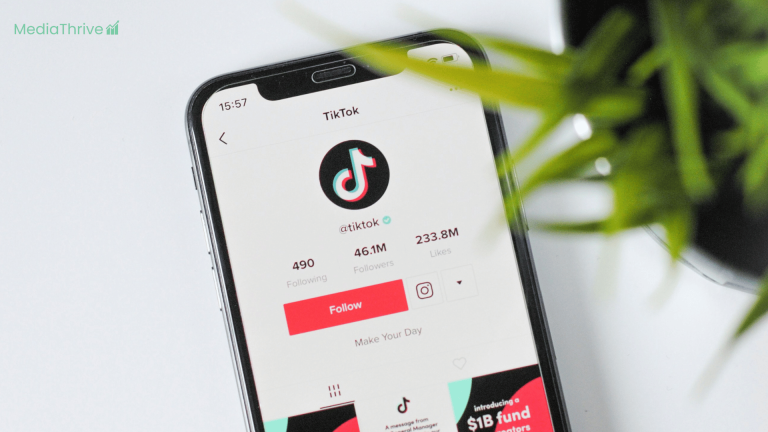How Google Destroyed My Business: A Cautionary Tale of Complacency
My mum always used to tell me, “Don’t put all your eggs in one basket.” It’s a shame I didn’t heed her wise words at nearly fifty years of age. In 2018, I started a blog on a topic I was passionate about after years of experience within the industry. What started as a side hustle to supplement my income quickly became a full-time business, as the website gained traction far faster than I could have anticipated. But as my story will show, success built on a single platform is a risky proposition that can come crashing down in the blink of an algorithm update.
The Rise of My Blog
Like many people in their late forties, I was searching for an extra income stream. A blog seemed like a good idea, considering my passion and knowledge in my chosen niche. I launched the site on WordPress at the end of 2018. By early 2019, I started to see promising traffic, and by the end of that year, my blog was pulling in enough income to allow me to quit my day job and focus on it full-time.
I wasn’t naive to the fact that most of this traffic came from Google. In fact, I was thrilled by it. Every time Google rolled out one of their infamous algorithm updates, I’d hear horror stories from other site owners who saw their traffic plummet overnight. But my site? It only grew. By the time the pandemic hit, traffic had soared, and so had my income. Things were looking great, but there was always this nagging feeling that I relied too much on one source. Yet, I did nothing about it.

Complacency Sets In
Through 2020, 2021 and 2022, my income from the blog was steady, and traffic was consistent. I’d convinced myself that my content was ‘evergreen’—the kind of stuff that would always perform well. I was making decent money without putting in too much effort, and I began to rest on my laurels. Updating content regularly? I’ll get to it later. Building an email list or engaging on social media? It didn’t seem urgent. The truth is, I let myself get complacent, and that would be my undoing.
Looking back, I can now see the warning signs. My YouTube channel, which I started around the same time as the blog, had slowly grown to over 1,000 subscribers. However, I rarely posted videos. My Facebook page had a meagre following of about 900, and I didn’t bother with Instagram, Twitter, or email marketing. I was too dependent on Google, but I was riding the wave, too comfortable to diversify my traffic sources.

The Fall: Google’s March 2023 Core Update
It’s one thing to hear other people’s horror stories about Google updates; it’s another to live through one. In March 2023, Google released a major core update, and overnight, I lost 70% of my traffic. This wasn’t just a minor setback. It was devastating. The income I had relied on to support my family was wiped out, and I was left scrambling to understand what went wrong.
I spent the next few months revamping my website, updating every piece of content, improving performance, and doing everything ‘by the book’. But the traffic didn’t recover. It barely moved. My website, which had once been a steady source of income, now felt like an anchor dragging me down.

Lessons Learned the Hard Way
It’s easy to blame Google. After all, they’re a massive corporation with no loyalty to anyone but their shareholders. But the truth is, the blame falls squarely on my shoulders. I built my business on a single platform, assuming the traffic would always be there. It wasn’t. And by the time I realised the error of my ways, it was too late.
For anyone reading this, especially if you’re new to online business, learn from my mistakes. Relying on Google traffic alone is like building a house on sand. It might stand for a while, but can be swept away at any moment. Diversify your traffic sources. Build an audience on social media. Create an email list from day one. Please don’t wait until it’s too late.
If I could turn back time, I’d have put far more effort into building my presence across multiple platforms—YouTube, Instagram, Twitter, you name it. I’d have invested time in creating valuable email content and fostering a community beyond Google search. Those who rely solely on search traffic are walking a dangerous tightrope. One algorithm update is all it takes for your business to crumble.

The Bitter End
In the end, I managed to sell my blog, but for a fraction of what it was worth just a couple of years prior. The sense of relief was mixed with deep regret. If only I had listened to that voice in the back of my head—if only I had taken the time to build a more resilient business model.
So, if you’re just starting out in this digital landscape, take my story as a cautionary tale. Don’t be lulled into a false sense of security by the success that’s built on a single platform, especially one as fickle as Google. Build your business on solid foundations. Spread your traffic sources wide, nurture your audience, and never, ever become complacent.
Because, in the end, it’s not Google that destroyed my business. I did.
I’ve learned a tough lesson from the mistakes I made as a professional blogger. I now advise all businesses to diversify their traffic sources as a matter of utmost importance. That’s why, at MediaThrive, we offer clients a comprehensive package that includes an off-website content strategy, focusing on building a strong brand presence across multiple channels. By doing so, we help businesses reduce their reliance on a single platform and create a more resilient and sustainable digital presence.
Beyond Google: Diversifying Your Traffic Sources
One of the biggest lessons I learned from my experience is that relying on a single platform—especially one as unpredictable as Google—is a dangerous game. While Google can be a powerful traffic source, it’s just one piece of the puzzle. When I lost 70% of my traffic overnight, it became painfully clear that I’d been very foolish. Diversifying your traffic sources is paramount to safeguarding your business against these sudden disruptions.

1. Social Media Marketing
Social media platforms like Facebook, Instagram, LinkedIn, and Twitter (or X) offer businesses the opportunity to build an engaged community that isn’t reliant on search engines. A well-maintained social media presence allows you to communicate directly with your audience, foster brand loyalty, and drive consistent traffic to your website. Regular posting, engaging with followers, and paid social ads can help ensure your business stays visible, even when your organic search traffic falters.
2. Email Marketing
Building an email list is one of the most reliable ways to maintain direct customer communication. Unlike social media platforms, where algorithms decide who sees your posts, email lets you control the message and reach your audience directly. By offering valuable content, promotions, and updates via email, you can drive consistent traffic to your website, regardless of external factors.

3. Content Syndication and Guest Blogging
Sharing your content on other platforms and contributing to industry blogs is another way to diversify traffic. By guest posting on high-traffic websites within your niche, you gain valuable backlinks for SEO and expose your brand to a new, relevant audience. Content syndication platforms can also help distribute your content more widely, driving additional traffic from external sources.
4. YouTube and Video Content
Video content is a growing powerhouse in the digital world. YouTube is the second-largest search engine after Google, and creating video content can be a valuable way to diversify your traffic. By consistently posting informative or entertaining videos, you can drive traffic to your website from an entirely different platform and benefit from increased brand exposure.

5. Paid Advertising
If your business relies heavily on organic traffic, integrating paid advertising through platforms like Google Ads, Facebook Ads, or TikTok Ads can help you diversify. While it requires a budget, paid ads provide an immediate traffic boost and allow you to target specific demographics, locations, and interests. By maintaining a mix of organic and paid traffic, you can reduce the impact of any sudden algorithm changes.
6. Collaborations and Partnerships
Collaborating with other businesses or influencers in your niche can help you reach new audiences. By co-hosting webinars, cross-promoting content, or offering joint promotions, you can drive traffic directly from another business’s audience to your website. Partnerships can strengthen your brand’s credibility and widen your reach beyond your regular channels.

7. Podcasts and Online Communities
Podcasts have become popular for sharing industry knowledge and connecting with niche audiences. Starting a podcast or appearing as a guest on established podcasts allows you to showcase your expertise and draw traffic to your website from a new source. Similarly, participating in online communities such as forums, Facebook Groups, or Reddit threads in your niche can drive targeted traffic back to your website.
8. Search Engine Alternatives
It’s easy to forget that Google isn’t the only search engine out there. Diversifying your SEO efforts to target platforms like Bing, DuckDuckGo, and Yahoo! can bring in traffic from alternative search sources. While these platforms don’t have the same volume as Google, they often have less competition, making ranking easier.
By investing in a broader mix of traffic sources, you’re not only building resilience but also increasing your growth opportunities. I wish I had diversified my own strategy much sooner. In the online world, a multi-channel approach isn’t just an option—it’s a necessity. Don’t make the same mistake I did; start building a strong, diverse traffic strategy today to future-proof your business.




